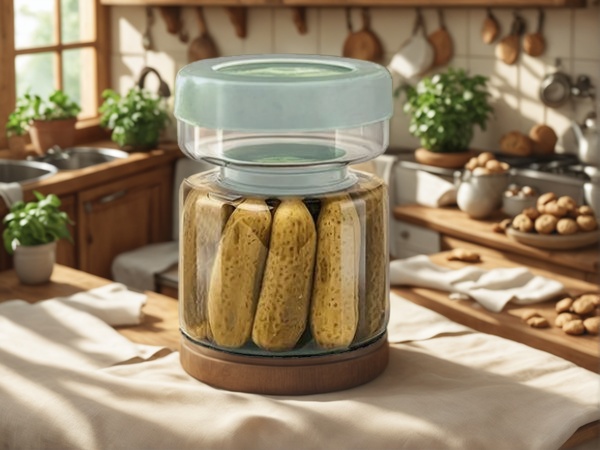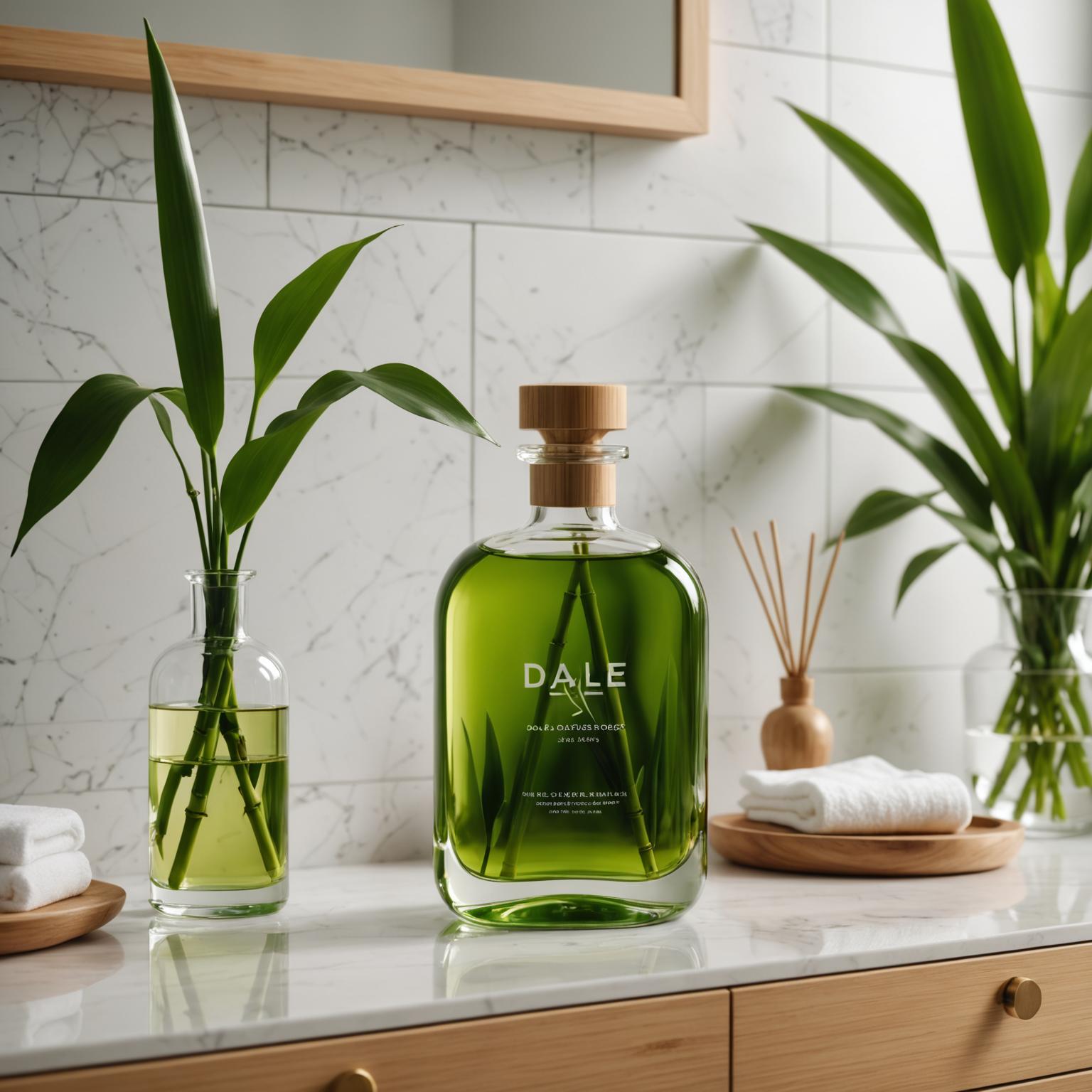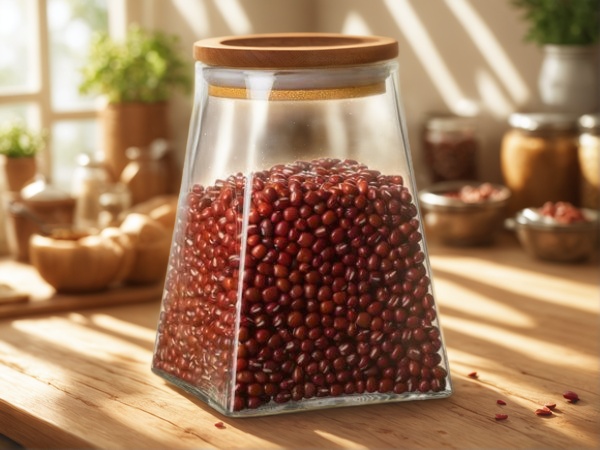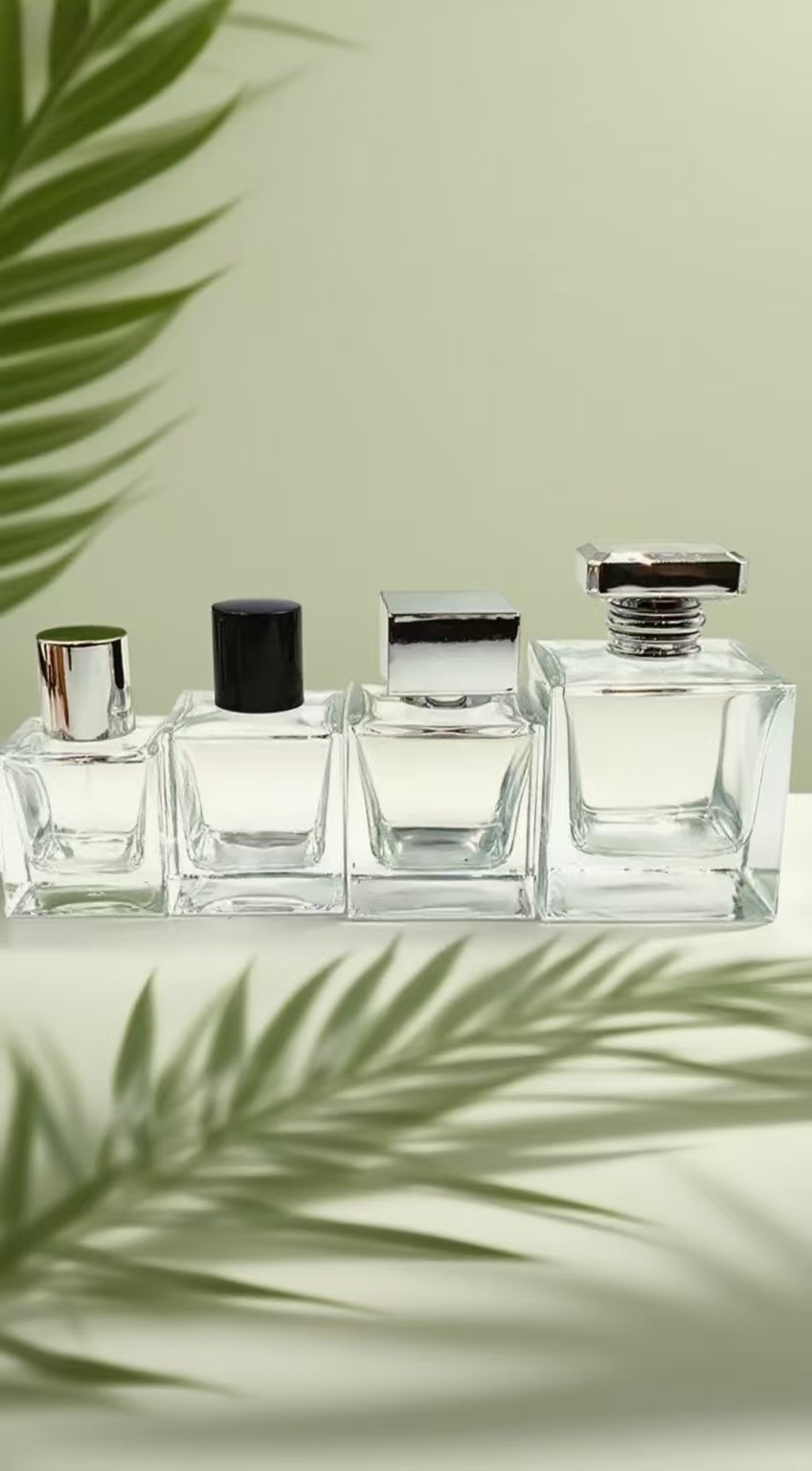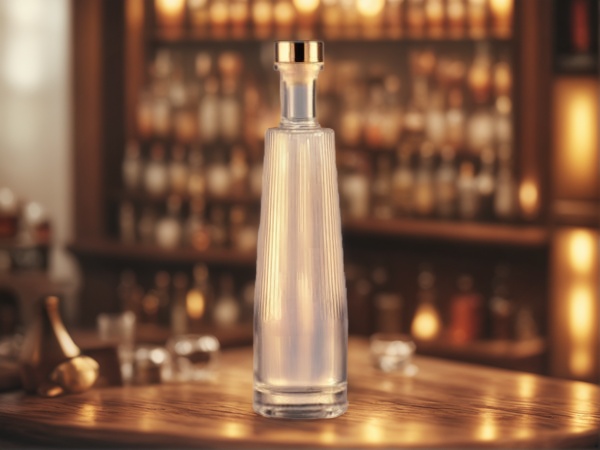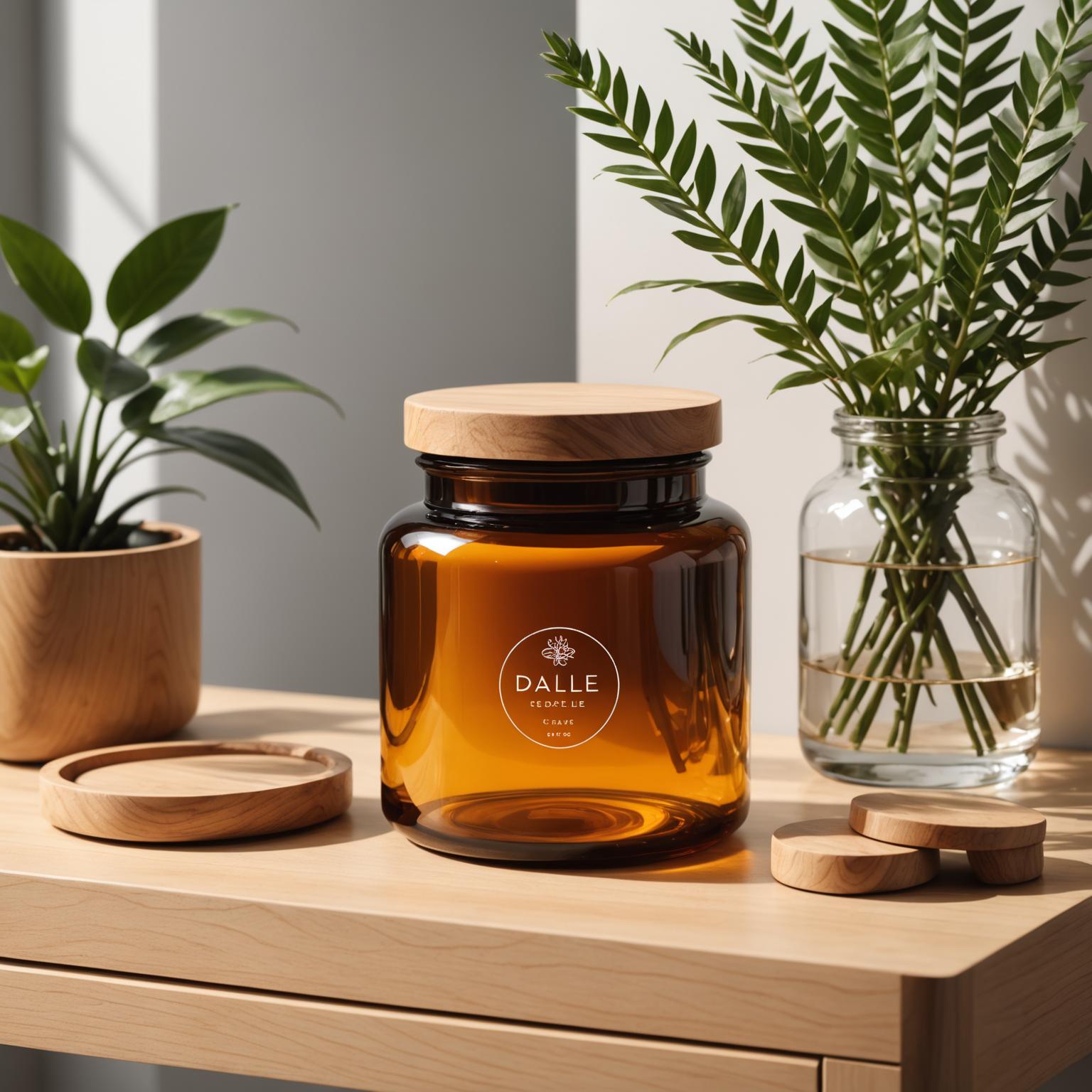The global packaging industry is undergoing a seismic shift, driven by two unignorable forces: consumer demand and regulatory pressure. A 2023 study by Nielsen found that 73% of global consumers are willing to pay more for products with sustainable packaging, while the EU’s Circular Economy Action Plan mandates that all packaging be reusable or recyclable by 2030. For brands in sectors like cosmetics, food & beverage, and personal care—where bottles are a staple—switching to eco-friendly alternatives isn’t just a “nice-to-have”; it’s a business imperative.
But with so many options flooding the market, choosing the right sustainable bottle can feel overwhelming. Should you opt for PCR (Post-Consumer Recycled) plastic, which gives new life to waste? Or sugarcane-based bottles, a plant-derived alternative to traditional plastic? What about wooden bottles, which offer a premium, biodegradable touch?
In this guide, we’ll focus on three of the most impactful solutions, each tied to a key player in the eco-packaging ecosystem: PCR bottle manufacturers (like Eco-Packaging), direct-supply sugarcane bottle factories, and wooden eco-packaging bottle suppliers for brands. We’ll compare their environmental footprints, production capabilities, brand alignment, and cost structures, so you can pick the option that fits your brand’s values, target audience, and operational needs.
1. PCR Bottles: The Recycled Plastic Powerhouse (From Manufacturers Like Eco-Packaging)
PCR—short for Post-Consumer Recycled—plastic has become a cornerstone of sustainable packaging, and for good reason. Unlike virgin plastic, which relies on fossil fuels and generates massive carbon emissions, PCR plastic is made from recycled plastic waste (think water bottles, food containers, and other post-consumer items) that’s collected, cleaned, melted down, and reshaped into new bottles. For brands looking to reduce their carbon footprint without sacrificing functionality, PCR bottles—especially from specialized manufacturers like Eco-Packaging—are a go-to choice.
How PCR Bottle Manufacturers (e.g., Eco-Packaging) Operate
Top PCR bottle manufacturers like Eco-Packaging don’t just “recycle plastic”—they optimize the entire process to ensure quality, consistency, and maximum sustainability. Here’s a breakdown of their typical workflow:
- Waste Sourcing & Sorting: They partner with certified recycling facilities to source high-quality post-consumer plastic waste, focusing on PET (Polyethylene Terephthalate) and HDPE (High-Density Polyethylene)—the two most recyclable plastics. This waste is sorted by type and color to avoid contamination.
- Cleaning & Purification: The recycled plastic is washed thoroughly to remove dirt, labels, and residual products, then treated to eliminate any contaminants (like food particles or chemicals). This step is critical—poor purification can lead to weak or discolored bottles.
- Melting & Molding: The cleaned plastic flakes are melted into pellets, which are then injected or blow-molded into custom bottle shapes (e.g., spray bottles for cosmetics, jars for skincare, or bottles for beverages). Manufacturers like Eco-Packaging often offer customization options, including different PCR percentages (from 30% to 100% PCR content) and branding via printing or labeling.
- Quality Control: Before shipping, bottles are tested for strength, leak resistance, and compliance with industry standards (e.g., FDA approval for food-grade bottles). Eco-Packaging, for example, prides itself on meeting global certifications like ISO 14001 (environmental management) and GRS (Global Recycled Standard), which validate the authenticity of their PCR content.
Environmental Benefits of PCR Bottles
The eco-credentials of PCR bottles are hard to beat, especially when sourced from reputable manufacturers:
- Reduced Carbon Emissions: Producing PCR plastic uses 70% less energy than virgin plastic, according to the Association of Plastic Recyclers. This translates to a 60-70% lower carbon footprint per bottle— a huge win for brands aiming to meet net-zero goals.
- Waste Diversion: Each PCR bottle keeps plastic waste out of landfills and oceans. For context, a single 500ml PCR bottle made with 100% PCR content diverts approximately 20 grams of plastic waste from landfills.
- Conserves Fossil Fuels: Virgin plastic is derived from petroleum; PCR plastic reduces reliance on these non-renewable resources. A 2022 report from the Ellen MacArthur Foundation found that scaling PCR use could cut plastic-related fossil fuel demand by 40% by 2030.
Who Should Choose a PCR Bottle Manufacturer Like Eco-Packaging?
PCR bottles are versatile, making them ideal for a wide range of brands:
- Mass-Market Brands: If you need high-volume production (e.g., a skincare brand selling 100,000 bottles monthly), PCR manufacturers like Eco-Packaging can scale to meet demand while keeping costs competitive (more on cost below).
- Brands Transitioning to Sustainability: If you’re new to eco-packaging, PCR is a low-risk entry point—it looks and functions like traditional plastic, so your customers won’t notice a difference (but they’ll appreciate the sustainability upgrade).
- Regulatory-Compliant Brands: For brands selling in the EU, US, or Canada, PCR bottles help meet local recycling mandates (e.g., California’s Extended Producer Responsibility (EPR) laws, which require brands to fund plastic waste management).
Cost Considerations
PCR bottles are more affordable than many other eco-alternatives. While 100% PCR bottles cost 10-15% more than virgin plastic, the price gap is narrowing as recycling infrastructure improves. Manufacturers like Eco-Packaging often offer bulk discounts—for example, ordering 50,000+ bottles can bring the cost per unit down to near-virgin plastic levels. Additionally, the brand value of “recycled content” often offsets the small price increase, as consumers are willing to pay a premium for sustainable products.
2. Sugarcane Bottles: Plant-Derived Plastic From Direct-Supply Factories
If you’re looking for a plastic alternative that’s both renewable and carbon-neutral, sugarcane bottles are a standout option. Made from polyethylene derived from sugarcane ethanol (instead of petroleum), these bottles are 100% plant-based, biodegradable (in industrial composting facilities), and have a net-zero carbon footprint. What’s more, sourcing them from direct sugarcane bottle factories eliminates middlemen, ensuring better quality control and lower costs.
What Makes Sugarcane Bottle Factories Unique (Especially Direct-Supply Ones)
Sugarcane bottle production is a specialized process, and direct-supply factories—those that control the entire supply chain from sugarcane farming to bottle molding—offer distinct advantages. Here’s how they operate:
- Sugarcane Sourcing & Ethanol Production: Direct factories partner with sustainable sugarcane farms (often in regions like Brazil, India, or Thailand, where sugarcane is abundant). The sugarcane is crushed to extract juice, which is fermented into ethanol. Unlike corn-based ethanol (which competes with food crops), sugarcane ethanol uses waste byproducts (like bagasse) for energy, making it a more sustainable choice.
- Polyethylene Conversion: The ethanol is converted into ethylene, which is then polymerized into polyethylene (the same plastic used in traditional bottles, but plant-based). This process is carbon-negative because sugarcane absorbs CO2 during growth, offsetting the emissions from production.
- Bottle Molding & Customization: Direct factories use blow-molding or injection-molding techniques to create bottles in various sizes and shapes. Because they cut out middlemen (e.g., distributors or brokers), they can offer faster lead times (often 2-3 weeks vs. 4-6 weeks for indirect suppliers) and more flexibility in customization (e.g., adding brand logos or adjusting bottle thickness).
- Sustainability Certification: Reputable direct sugarcane bottle factories hold certifications like Bonsucro (which ensures ethical sugarcane farming) and OK Compost (for biodegradability). This transparency is key for brands looking to back up their “plant-based” claims with third-party validation.
Environmental Benefits of Sugarcane Bottles
Sugarcane bottles offer a unique set of eco-advantages that set them apart from PCR and traditional plastic:
- Carbon Neutrality: Sugarcane absorbs CO2 as it grows—enough to offset the emissions generated during ethanol production and bottle manufacturing. This makes sugarcane bottles carbon-neutral over their lifecycle, a claim few other packaging materials can make.
- Renewable Resource: Sugarcane is a fast-growing crop (it matures in 12-18 months), making it a renewable alternative to fossil fuels. Unlike petroleum, which takes millions of years to form, sugarcane can be replenished annually.
- Biodegradability: While traditional plastic can take 400+ years to decompose, sugarcane polyethylene biodegrades in 1-5 years in industrial composting facilities. This is a major plus for brands targeting eco-conscious consumers who prioritize end-of-life sustainability.
Who Should Work With a Direct Sugarcane Bottle Factory?
Sugarcane bottles are perfect for brands that want to emphasize “renewable” and “plant-based” in their marketing:
- Natural & Organic Brands: If your brand sells organic skincare, herbal supplements, or natural beverages, sugarcane bottles align with your “clean” positioning. For example, a small-batch juice brand could use sugarcane bottles to highlight its commitment to “from farm to bottle” sustainability.
- Brands in Compost-Friendly Markets: If your target market has access to industrial composting (e.g., parts of Europe, Canada, or the US West Coast), sugarcane bottles’ biodegradability becomes a key selling point.
- Brands Prioritizing Supply Chain Transparency: Direct factories let you trace your bottles from sugarcane farm to finished product, which is a powerful story to share with consumers (e.g., “Our bottles are made from sugarcane grown on Bonsucro-certified farms in Brazil”).
Cost Considerations
Sugarcane bottles are slightly more expensive than PCR bottles, but direct-supply factories help keep costs in check. Without middlemen, the cost per unit is 15-20% higher than virgin plastic (vs. 25-30% for indirect sugarcane suppliers). For brands that can leverage the “plant-based” narrative to justify a small price increase (e.g., a premium organic skincare line), the investment pays off in customer loyalty. Additionally, as sugarcane ethanol production scales, prices are expected to drop by 10-15% by 2026, making this option even more accessible.
3. Wooden Eco-Packaging Bottles: Premium, Biodegradable Solutions From Brand-Focused Suppliers
For brands that want to stand out with packaging that’s both sustainable and luxurious, wooden eco-packaging bottles are the ultimate choice. Crafted from responsibly sourced wood (like bamboo, oak, or pine), these bottles are 100% biodegradable, reusable, and offer a tactile, premium feel that resonates with high-end consumers. Wooden eco-packaging bottle suppliers for brands specialize in creating custom designs that align with your brand’s aesthetic, making them ideal for luxury and artisanal products.
What to Expect From Wooden Eco-Packaging Bottle Suppliers for Brands
Unlike mass-produced plastic bottles, wooden bottles require skilled craftsmanship—and brand-focused suppliers excel at blending artistry with sustainability. Here’s what their process entails:
- Responsible Wood Sourcing: Top suppliers use wood from FSC (Forest Stewardship Council) certified forests, ensuring that trees are replanted and ecosystems are protected. Many also use reclaimed wood (e.g., from old furniture or construction sites) to further reduce environmental impact.
- Crafting & Finishing: The wood is cut, shaped, and sanded to create bottle bodies, which are often paired with eco-friendly lids (e.g., bamboo caps or metal closures lined with natural rubber). Suppliers offer custom finishes, such as natural oil coatings (to protect against moisture) or laser-engraved brand logos, to elevate the premium feel.
- Liner & Safety Compliance: For liquid products (e.g., perfumes, essential oils, or spirits), suppliers add food-grade, biodegradable liners (e.g., beeswax or plant-based plastics) to prevent leakage and ensure the wood doesn’t interact with the product. This step is critical for compliance with FDA and EU safety standards.
- Brand Alignment: Brand-focused suppliers work closely with you to design bottles that reflect your brand’s identity. For example, a luxury perfume brand might opt for a sleek oak bottle with a minimalist engraving, while an artisanal essential oil brand could choose a rustic bamboo bottle with hand-carved details.
Environmental Benefits of Wooden Eco-Packaging Bottles
Wooden bottles offer a unique combination of sustainability and longevity:
- 100% Biodegradable & Compostable: At the end of their lifecycle, wooden bottles decompose naturally (in 6-12 months in home compost) without releasing harmful chemicals. Unlike plastic, they don’t leave microplastics in the environment.
- Reusability: Wooden bottles are durable—many consumers reuse them as storage containers (e.g., for spices, small tools, or flowers) after the product is empty. This extends their lifecycle and reduces waste, aligning with the “circular economy” trend.
- Low Carbon Footprint: Wood is a renewable resource, and the production process (cutting, shaping, finishing) uses far less energy than plastic or glass manufacturing. A 2023 study by the Sustainable Packaging Coalition found that wooden bottles have a 40% lower carbon footprint than glass bottles and a 60% lower footprint than virgin plastic bottles.
Who Should Partner With a Wooden Eco-Packaging Bottle Supplier?
Wooden bottles are best suited for brands that prioritize premium positioning and sustainability:
- Luxury Brands: Perfumes, high-end skincare, and craft spirits brands can use wooden bottles to differentiate themselves from competitors. The tactile, natural feel of wood conveys exclusivity and quality, which resonates with luxury consumers.
- Artisanal & Handmade Brands: Small-batch brands (e.g., handmade soaps, organic candles, or craft oils) benefit from the artisanal look of wooden bottles, which reinforces their “handcrafted” narrative.
- Brands Targeting Conscious Consumers: Millennial and Gen Z consumers—who value uniqueness and sustainability—are willing to pay a premium for wooden packaging. A 2022 survey by McKinsey found that 65% of luxury consumers consider sustainability when making purchases, and 40% said they’d pay more for products with eco-friendly, premium packaging.
Cost Considerations
Wooden bottles are the most expensive of the three options, but their premium positioning justifies the cost. Prices vary based on wood type (reclaimed wood is more affordable than FSC-certified oak) and customization, but expect to pay 2-3x more than PCR or sugarcane bottles. However, for brands that can leverage the “luxury + sustainability” story, this investment drives higher margins and customer loyalty. For example, a luxury perfume brand using a wooden bottle could price its product 20-30% higher than a similar product in plastic packaging, with consumers willing to pay for the unique, sustainable design.
PCR vs. Sugarcane vs. Wooden Bottles: A Side-by-Side Comparison
To help you make the final call, here’s a quick comparison of the three options:
| Factor | PCR Bottles (Eco-Packaging) | Sugarcane Bottles (Direct Factory) | Wooden Bottles (Brand Supplier) |
|---|---|---|---|
| Environmental Footprint | Low (60-70% less CO2 than virgin plastic) | Carbon-neutral (CO2 absorbed by sugarcane) | Very low (biodegradable, low energy use) |
| Functionality | Same as traditional plastic (leak-proof, durable) | Same as plastic (biodegradable in industrial compost) | Durable, requires liner for liquids |
| Brand Alignment | Mass-market, sustainability beginners | Natural/organic brands, compost-focused markets | Luxury, artisanal, premium brands |
| Cost (vs. Virgin Plastic) | 10-15% higher | 15-20% higher (direct supply) | 200-300% higher |
| Lead Time | 3-4 weeks (bulk) | 2-3 weeks (direct supply) | 4-6 weeks (custom craftsmanship) |
| Best For | High-volume, cost-conscious brands | Natural/organic, compost-friendly markets | Luxury, artisanal, high-margin products |
Conclusion: Choosing the Right Eco-Friendly Bottle for Your Brand
There’s no “one-size-fits-all” eco-friendly bottle—your choice depends on your brand’s values, target audience, budget, and operational needs.
- If you’re a mass-market brand looking to dip your toes into sustainability with minimal cost and disruption, PCR bottles from a manufacturer like Eco-Packaging are your best bet. They’re affordable, scalable, and offer clear environmental benefits.
- If you want to emphasize “plant-based” and “carbon-neutral” in your marketing, and your market has access to industrial composting, direct-supply sugarcane bottles strike the perfect balance between sustainability and functionality.
- If you’re a luxury or artisanal brand looking to stand out with premium, reusable packaging, wooden eco-packaging bottles from a brand-focused supplier will elevate your product and resonate with conscious consumers.
No matter which option you choose, investing in eco-friendly bottles isn’t just good for the planet—it’s good for business. By aligning your packaging with consumer demand and regulatory trends, you’ll boost brand loyalty, attract new customers, and position your brand as a leader in the sustainable future of packaging.
Ready to take the next step? Reach out to a trusted PCR bottle manufacturer, direct sugarcane bottle factory, or wooden eco-packaging supplier today—and start your journey toward a greener, more profitable brand.



